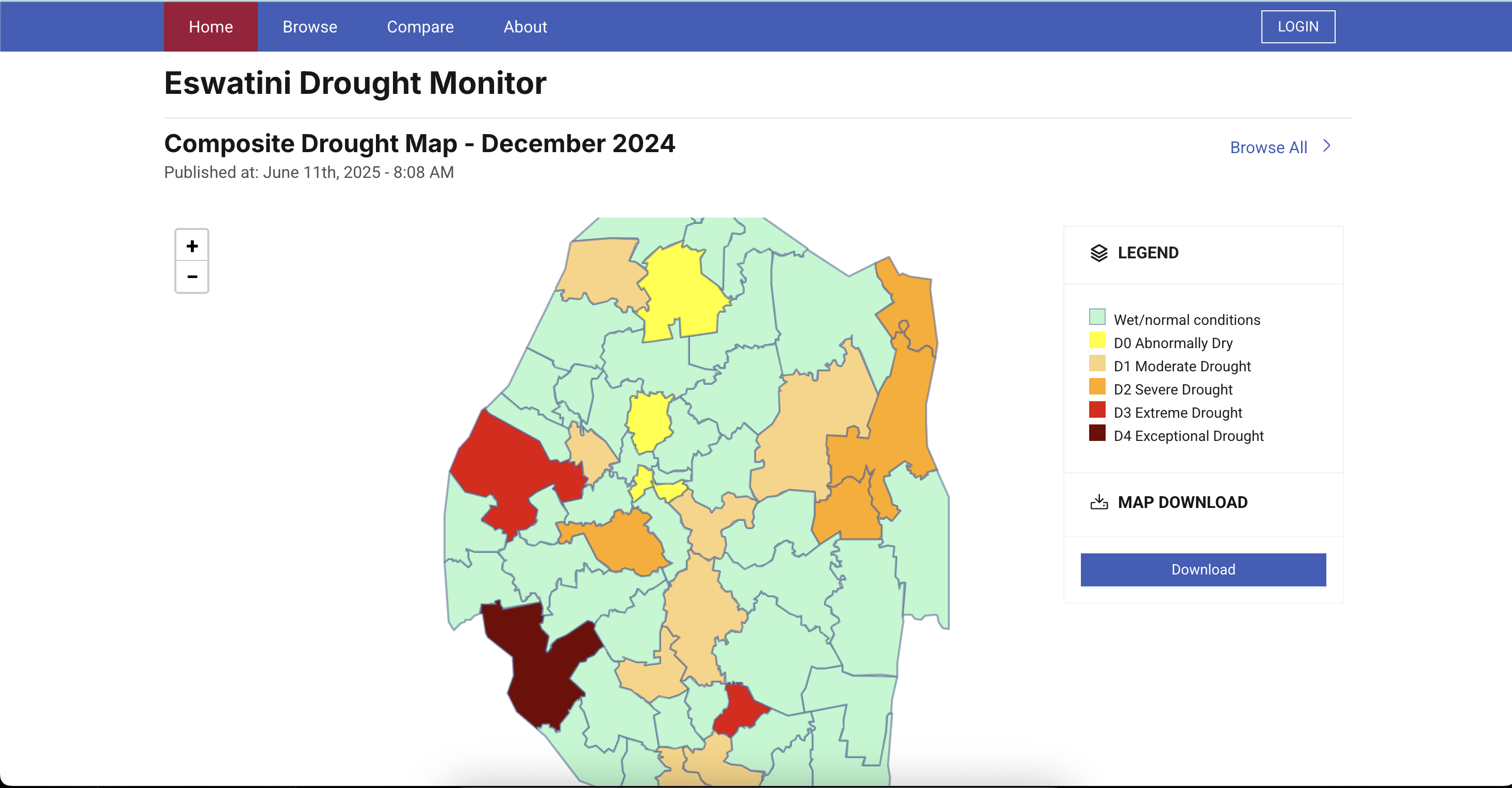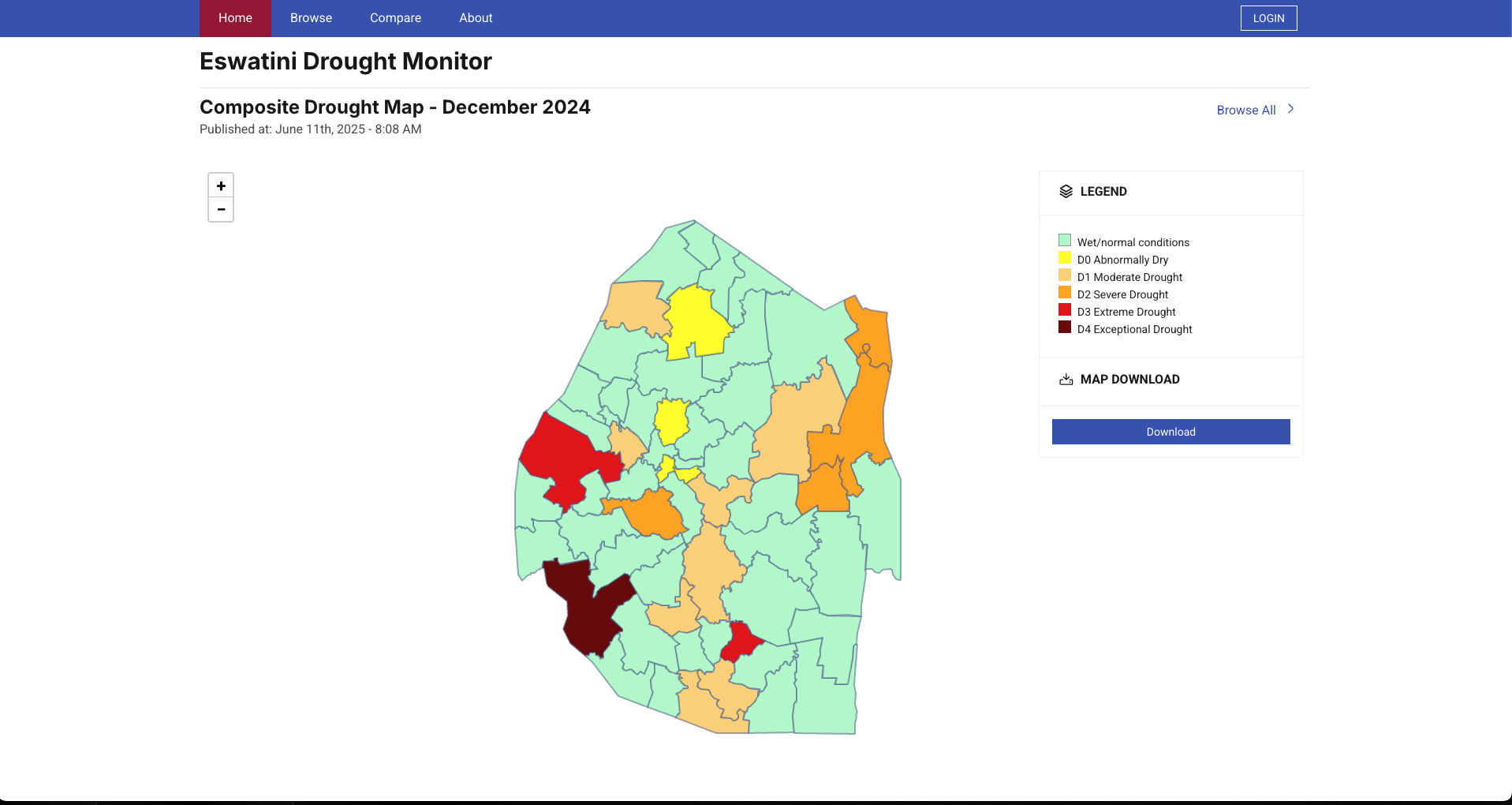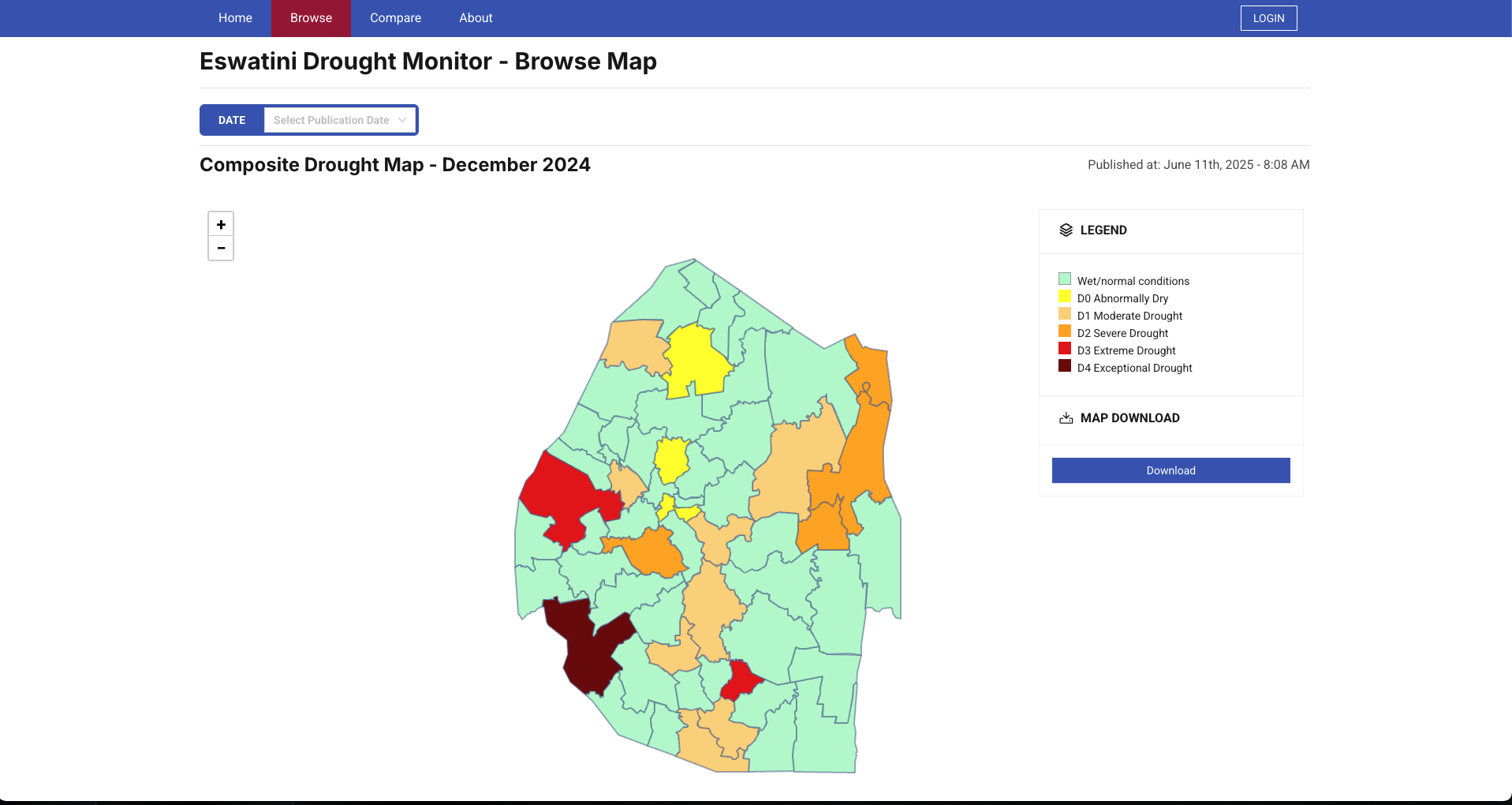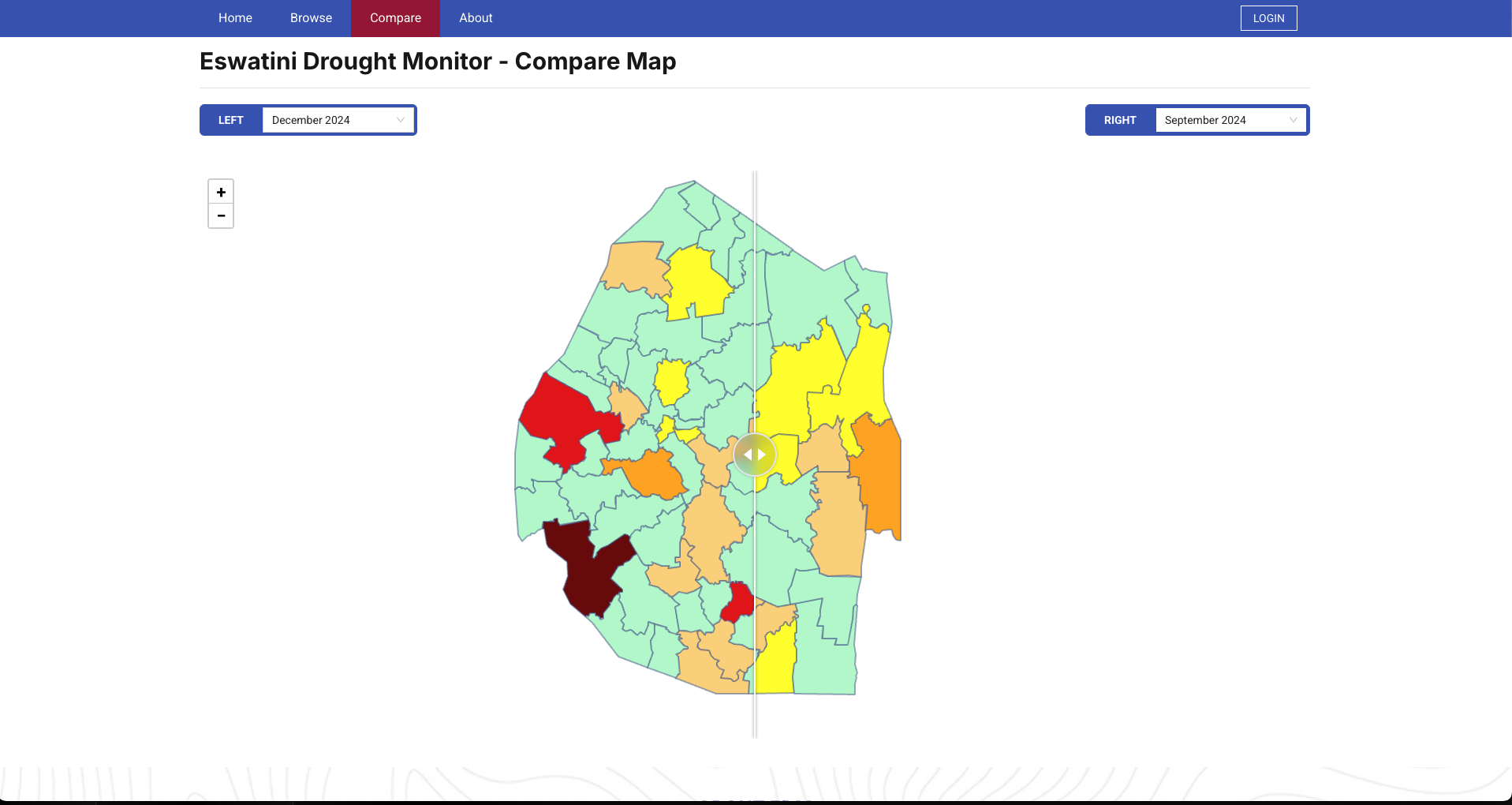
Drought Monitoring in the Kingdom of Eswatini

Project Description
Akvo is implementing a state-of-the-art drought monitoring platform that integrates automation and open-source technology to make drought tracking more efficient, accurate, and accessible.
Instead of relying on manual data collection and processing, the system automates drought monitoring, integrating real-time data to enable faster, more informed decision-making. By providing timely and validated insights, it empowers local communities and government agencies to anticipate and respond to drought threats more effectively.
The platform is designed to seamlessly integrate with Eswatini’s existing IT infrastructure, ensuring ease of use, long-term sustainability, and minimal disruption to current workflows. Additionally, it enhances collaboration and coordination across key sectors - including agriculture, water management, and disaster response - enabling a unified and data-driven approach to drought resilience.
Project Details
🏁 Status: Completed
👷 Project Manager: Maurits Kruisheer
📆 Dates: 2024-08-01 to 2025-04-30 (8 Months)
🤵 Partner: National Disaster Managmenent Agency (NDMA) Eswatini,Worldbank
💵 Budget (in EUROS): 58000
🇺🇳 Countries: Eswatini
🚀 Sectors: Climate
🗂️ Category: Data Platform
🛸 Technologies: Python,Javascript
Demo Video
Key Features
Drought Map Creation
This is the system's main job: to create and display maps that show drought severity. The system uses a special calculation called the Composite Drought Indicator (CDI) to do this. You can even manually generate a new map to make sure the process works correctly
Public Drought Data Access
Even without an account, anyone can explore the drought data. This feature lets a public user browse and download drought maps. You can also view maps side-by-side to compare different months
Review and Publication Workflow
The DMH has a process for getting new reports reviewed and approved before they are made public. An admin can start a review process for a report, and assigned reviewers can then provide their feedback. Once the feedback is in, the admin can publish the report to make it available to others



